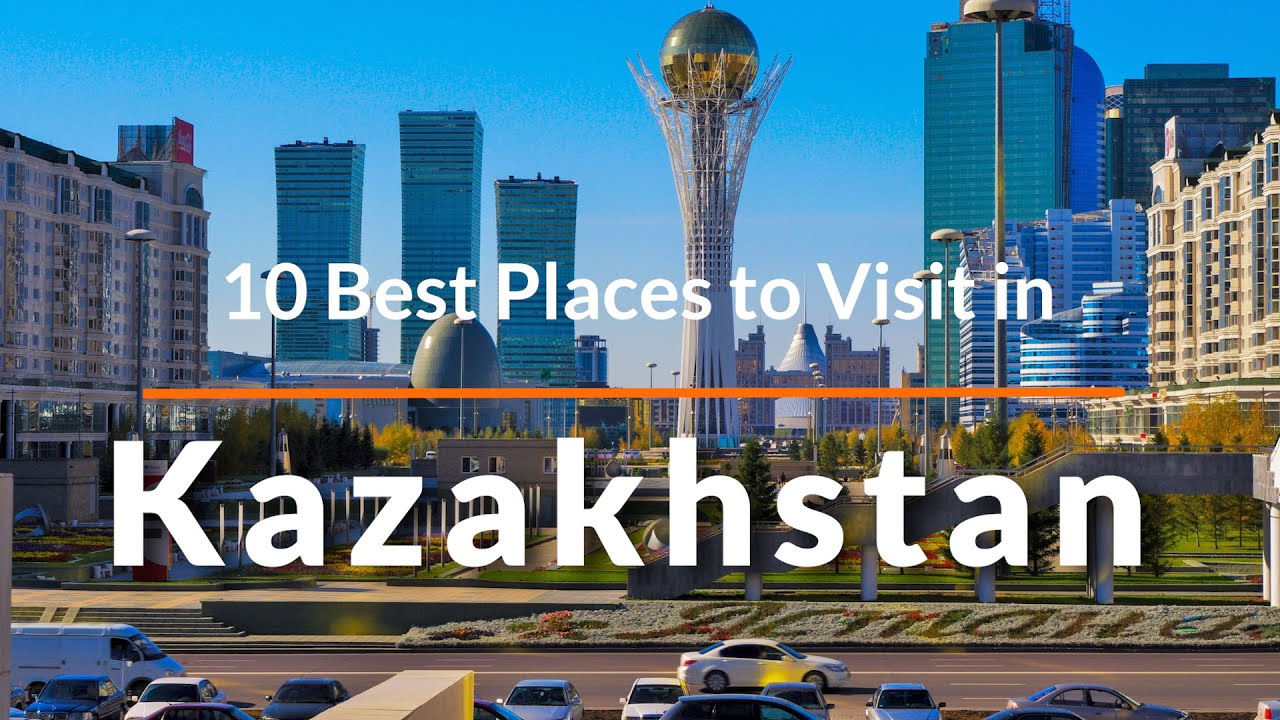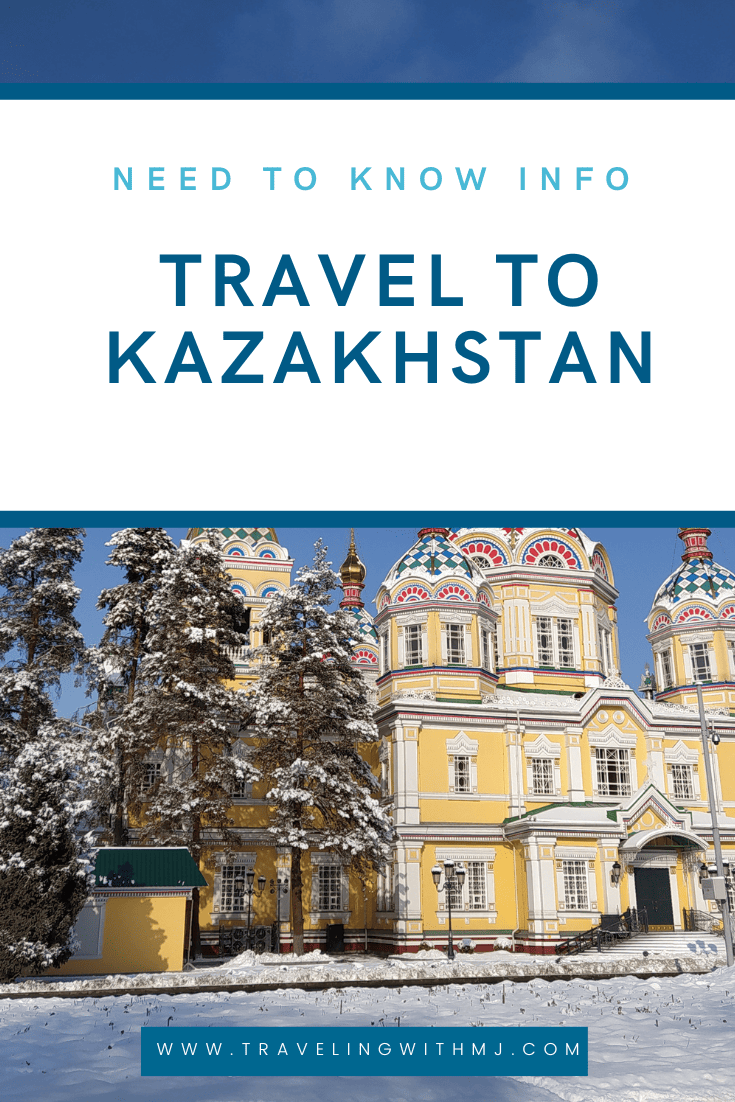
Kazakhstan, the heart of Central Asia, is a land of vast steppes, snow-capped mountains, modern cities, and a rich nomadic heritage. It’s a country that seamlessly blends ancient traditions with futuristic ambition, offering travelers a unique and unforgettable experience. From the bustling metropolis of Almaty to the otherworldly landscapes of the Charyn Canyon, Kazakhstan has something to captivate every adventurer. This comprehensive guide will equip you with everything you need to plan your journey, navigate this fascinating country, and uncover its hidden gems.
A Glimpse into Kazakhstan’s History and Culture:
Before you embark on your journey, understanding the historical and cultural context of Kazakhstan is crucial for a richer travel experience.

Related Articles about Journey to the Steppe: Your Comprehensive Guide to Traveling in Kazakhstan:
- Hawaii: A Paradise Unveiled – Exploring the Top Attractions and Essential Travel Tips
- Qatar: Where Tradition Meets Tomorrow – A Comprehensive Travel Guide
- The Glitz, the Glamour, the Grand Canyon Gateway: A Comprehensive Travel Guide to Las Vegas
- Croatia: Your Essential Guide to the Adriatic’s Jewel
- Kuala Lumpur: A Tapestry of Tradition and Tomorrow
- A Nomadic Past: Kazakhstan’s history is deeply intertwined with nomadic tribes. For centuries, the vast steppes were home to various nomadic groups, including the Scythians, Huns, and Turkic peoples. The Kazakhs, as we know them today, emerged as a distinct group in the 15th century, forming a confederation of nomadic tribes.
- The Silk Road’s Influence: Kazakhstan served as a vital part of the Silk Road, the ancient trade route that connected East and West. This fostered cultural exchange and left its mark on the country’s architecture, cuisine, and traditions.
- Russian Influence and Independence: In the 18th century, the Russian Empire began to exert its influence over Kazakhstan, culminating in its annexation. The Soviet era, lasting from the 1920s to 1991, brought significant changes, including industrialization and collectivization, which had a profound impact on Kazakh society. Kazakhstan gained its independence in 1991, marking a new chapter in its history.
- Modern Kazakhstan: Since independence, Kazakhstan has undergone significant modernization and development. The country is rich in natural resources, particularly oil and gas, which have fueled its economic growth. It has also embraced a policy of multi-vector diplomacy, seeking to build strong relationships with various countries around the world.
- Culture and Traditions: Kazakh culture is a vibrant tapestry woven from nomadic traditions, Islamic influences, and modern adaptations. Key aspects include:
- Hospitality: Kazakhs are renowned for their warm hospitality. Guests are treated with utmost respect and generosity.
- Nomadic Lifestyle: While many Kazakhs now live in cities, the nomadic traditions of herding, equestrianism, and yurt living are still cherished and practiced, especially in rural areas.
- Music and Arts: Music plays a vital role in Kazakh culture. The dombra, a two-stringed lute, is a national instrument, and traditional songs and dances are performed at celebrations and festivals.
- Cuisine: Kazakh cuisine is hearty and flavorful, with a focus on meat and dairy products. Key dishes include beshbarmak (boiled meat with noodles), plov (rice pilaf with meat and vegetables), and various dairy products like koumiss (fermented mare’s milk).

Top Attractions: Exploring Kazakhstan’s Diverse Landscapes:
Kazakhstan boasts a diverse range of attractions that will cater to every traveler’s interests. Here are some of the must-see destinations:
- Almaty: The former capital and largest city, Almaty, is a vibrant hub of culture, entertainment, and natural beauty.
- Panfilov Park: A peaceful oasis in the city center, home to the Zenkov Cathedral, a stunning wooden Orthodox church.
- Kok-Tobe Hill: Ride the cable car to the top of Kok-Tobe for panoramic views of the city and the surrounding mountains.
- Medeu Ice Skating Rink: The world’s highest ice skating rink, offering a unique sporting experience.
- Big Almaty Lake: A stunning alpine lake surrounded by snow-capped mountains, perfect for hiking and photography.
- Green Bazaar: Immerse yourself in the local culture by visiting this bustling market, where you can find fresh produce, spices, and souvenirs.
- Astana (Nur-Sultan): The current capital city, Astana (renamed Nur-Sultan in 2019), is a futuristic city showcasing modern architecture and ambitious urban planning.
- Bayterek Tower: A symbolic monument representing the "tree of life," offering panoramic views of the city.
- Khan Shatyr Entertainment Center: A giant transparent tent housing a shopping mall, entertainment venues, and a mini-beach.
- Palace of Peace and Reconciliation: A unique pyramid-shaped building designed to promote interfaith dialogue.
- Hazrat Sultan Mosque: One of the largest mosques in Central Asia, with stunning architecture and intricate details.
- Charyn Canyon: Often compared to the Grand Canyon, Charyn Canyon is a breathtaking natural wonder with dramatic rock formations carved by the Charyn River.
- Kolsai Lakes and Kaindy Lake: These stunning alpine lakes offer breathtaking scenery and opportunities for hiking, horseback riding, and camping. Kaindy Lake is particularly unique, with submerged trees rising from its turquoise waters.
- Baikonur Cosmodrome: A unique opportunity to witness space exploration history. This is the world’s first and largest operational space launch facility, from which the first human spaceflight was launched.
- Lake Balkhash: The second-largest lake in Central Asia, Lake Balkhash is unique because one half is freshwater and the other is saltwater.
- Turkestan: A historical city and UNESCO World Heritage site, Turkestan is home to the Mausoleum of Khoja Ahmed Yasawi, a masterpiece of Timurid architecture.
Travel Tips for a Smooth Journey:
- Visas: Kazakhstan offers visa-free entry for citizens of many countries. Check the latest visa requirements based on your nationality on the official website of the Ministry of Foreign Affairs of the Republic of Kazakhstan or the local embassy of Kazakhstan.
- Currency: The official currency is the Kazakhstani Tenge (KZT). ATMs are available in major cities, but it’s advisable to carry cash, especially when traveling to rural areas. Credit cards are accepted in most hotels, restaurants, and shops in larger cities.
- Language: Kazakh and Russian are the official languages. While English is spoken in some tourist areas, it’s helpful to learn some basic Russian phrases or use a translation app.
- Best Time to Visit: The best time to visit Kazakhstan is during the shoulder seasons (April-May and September-October) when the weather is pleasant and the crowds are smaller. Summer (June-August) can be hot, especially in the south, while winter (November-March) can be cold and snowy.
- Health and Safety: Kazakhstan is generally a safe country for travelers. However, it’s essential to take standard precautions against petty theft and be aware of your surroundings, especially in crowded areas. Make sure to have travel insurance that covers medical emergencies. Drink bottled water and eat at reputable restaurants.
- Transportation:
- Flights: Flights are the most convenient way to travel between major cities.
- Trains: Kazakhstan has a well-developed railway system, offering comfortable and affordable travel options.
- Buses: Buses are a budget-friendly way to travel between cities and towns.
- Taxis: Taxis are readily available in major cities. Make sure to agree on the fare before starting your journey or use a ride-hailing app.
- Car Rental: Renting a car gives you flexibility, especially for exploring remote areas, but be aware of road conditions.
- Communication: SIM cards are readily available. You can purchase a local SIM card to access mobile data and make calls. Wi-Fi is available in most hotels, cafes, and restaurants in larger cities.
- Accommodation:
- Hotels: A wide range of hotels are available in major cities, from budget-friendly options to luxury hotels.
- Hostels: Hostels are a good option for budget travelers.
- Guesthouses and Homestays: For a more authentic experience, consider staying in guesthouses or homestays, especially in rural areas.
- Yurt Stays: A unique and immersive experience, you can stay in traditional yurts, especially in regions with nomadic heritage.
- Dress Code: Dress modestly when visiting religious sites. Otherwise, casual attire is acceptable.
- Bargaining: Bargaining is common in markets and bazaars. Don’t be afraid to negotiate prices.
- Respect Local Customs: Be mindful of local customs and traditions. Show respect for elders and be aware of cultural sensitivities.
- Food and Drink:
- Try local specialties: Beshbarmak, plov, lagman, and shashlik are all worth trying.
- Drink traditional beverages: Koumiss (fermented mare’s milk), shubat (fermented camel’s milk), and airan (yogurt drink) are popular.
- Be aware of food safety: Eat at reputable restaurants and ensure the food is properly cooked.
Accommodation Options:
Kazakhstan offers a diverse range of accommodation options to suit every budget and preference.
- Luxury Hotels: Major cities like Almaty and Astana boast a selection of international luxury hotels offering world-class amenities and services. These are ideal for travelers seeking comfort and convenience.
- Mid-Range Hotels: Mid-range hotels provide a balance of comfort and affordability, catering to a wider range of travelers. They often offer comfortable rooms, basic amenities, and convenient locations.
- Budget Hotels and Hostels: Budget-friendly options like hostels and budget hotels are available in most cities. These are great for backpackers and budget-conscious travelers.
- Guesthouses and Homestays: For a more immersive experience, consider staying in guesthouses or homestays. These options provide a chance to interact with locals and experience Kazakh hospitality firsthand.
- Yurt Stays: Experience the nomadic way of life by staying in a traditional yurt, especially in regions with strong nomadic heritage. These unique accommodations offer a memorable experience.
- Apartment Rentals: Websites like Airbnb offer apartment rentals, providing a more independent and spacious option, especially for longer stays.
Transportation: Navigating Kazakhstan’s Vastness:
Getting around Kazakhstan involves a combination of transportation options, each offering different advantages.
- Flights: Domestic flights are the most convenient way to travel between major cities like Almaty, Astana, and Aktau. Air Astana is the national airline, offering a wide range of domestic and international routes.
- Trains: Kazakhstan has a well-developed railway system, offering comfortable and affordable travel options. Trains are a popular choice for long-distance travel, connecting major cities and towns. Consider booking train tickets in advance, especially during peak season.
- Buses: Buses are a budget-friendly way to travel between cities and towns. Bus stations are available in most towns and cities.
- Taxis: Taxis are readily available in major cities. Make sure to agree on the fare before starting your journey or use a ride-hailing app like Yandex Taxi.
- Car Rental: Renting a car gives you flexibility, especially for exploring remote areas and scenic landscapes like the Charyn Canyon or the Kolsai Lakes. Be aware of road conditions, especially in rural areas. Driving in Kazakhstan requires an international driving permit.
- Marshrutkas (Minibuses): Marshrutkas are a common form of public transport, particularly within cities and between nearby towns. They are cheap but can be crowded.
Best Time to Visit Kazakhstan:
The best time to visit Kazakhstan depends on your interests and preferences.
- Shoulder Seasons (April-May and September-October): These months offer pleasant weather, with mild temperatures and fewer crowds. This is an ideal time for sightseeing, hiking, and exploring the outdoors.
- Summer (June-August): Summer is the peak tourist season, with warm and sunny weather. Temperatures can be hot, especially in the south. This is the best time for hiking in the mountains, visiting the lakes, and attending outdoor events.
- Winter (November-March): Winter can be cold and snowy, with temperatures dropping below freezing. This is the best time for skiing and snowboarding in the Almaty region. Some attractions might be inaccessible due to snow.
Conclusion:
Kazakhstan is a land of adventure, history, and natural beauty. From the modern metropolis of Almaty to the ancient wonders of Turkestan and the breathtaking landscapes of the Charyn Canyon, Kazakhstan offers an unforgettable travel experience. By planning your trip with the information provided in this guide, you can prepare yourself for a journey filled with discovery, cultural immersion, and lasting memories. Embrace the hospitality of the Kazakh people, explore the diverse landscapes, and uncover the hidden gems of this remarkable country. Your journey to the steppe awaits!





